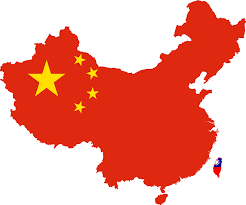

The establishment news media in the U.S. that usually echo the government’s line on foreign policy — especially the New York Times and Washington Post — have been yoyoing over the Trump administration’s stance toward the People’s Republic of China. No wonder. The administration’s own statements and actions toward China have been all over the map.
Back in January, before and after the Inauguration, Trump and his nominee for secretary of state, former ExxonMobil CEO Rex Tillerson, laid out a hard line against China. At one point Tillerson even threatened a blockade of islands in the South China Sea claimed by China and reinforced by its navy. A blockade would be an act of war.
Then, as the corrupt Park regime in south Korea was being swept away by massive demonstrations, the U.S. scrambled to put in place a THAAD missile battery there, supposedly to guard against an attack from north Korea, but widely seen in Asia as an aggressive move aimed at China and Russia as well.
At the same time, the Pentagon was carrying out huge war exercises with south Korea and Japan aimed at the Democratic People’s Republic of Korea in the north. Openly advertising these war “games” as simulating the “decapitation” of the DPRK leadership, the U.S. threats reached a crescendo when, on April 9, the U.S. commander of the Pacific Fleet announced that the aircraft carrier Carl Vinson, with its wing of fighter jets, had been diverted from a course toward Australia and was steaming toward the waters off Korea.
All this enormous military pressure came to a head while President Xi Jinping of China was meeting with Trump at his Florida estate, during which Trump announced on April 7 that “we have made tremendous progress in our relationship with China.” This prompted much media speculation that China was going to help Washington in its dealings with the DPRK, which has developed nuclear weapons and the missiles to deliver them.
The DPRK knows what war is like. The U.S. sent millions of troops to invade Korea from 1950 to 1953 in an effort to completely destroy the socialist revolution that had liberated the northern half of the peninsula from Japanese colonial rule. After millions of deaths, this war ended in a stalemate — the first real defeat for the seemingly all-powerful U.S. military. In that war, a million Chinese volunteers fought alongside the Koreans.
The Korean War has never officially ended, and 28,000 U.S. troops remain stationed in the south. The north Korean leaders opted for developing a nuclear defense only after all their efforts to engage the U.S. in negotiations for a peace treaty were ignored by Washington.
The DPRK has pledged no first use of nuclear weapons. The U.S., with a stockpile of 6,800 nuclear warheads, refuses to make such a pledge. Trump himself leaked recently that at least two U.S. nuclear-armed submarines were in the waters off Korea.
China responds to U.S. warplanes
Three actions in late May by the Chinese military reveal that Trump’s sweet talk can’t disguise the aggressive moves taken by U.S. imperialism toward China as well as north Korea.
All three involve Chinese fighter jets moving close to U.S. warplanes, in one case even flying upside down over the U.S. plane. The first occurred as U.S. jets flew over China’s territorial waters near islands in the South China Sea. The second was when a U.S. “sniffer” plane, built to detect radiation particles, flew close to both China and the DPRK in the North China Sea. The most recent happened as U.S. warplanes flew close to Hong Kong.
The U.S. government and media treat all these events as signs of China’s belligerence. But these were not Chinese planes flying off the coast of the U.S.! Just imagine the outcry if that were to happen.
No, these incidents involved China defending its own air space as U.S. warplanes flew near its coasts and territorial waters.
Behind all the maneuvering by Washington and the Pentagon is the plain fact that China, a deeply impoverished country just two generations ago, has developed at a phenomenal rate, raising 800 million people out of deep poverty over the last 38 years, according to the U.N. Development Program. At the same time, Western capitalist economies, while producing huge fortunes for a few, have stagnated with high levels of unemployment and low wages.
So, having abandoned its futile attempt to stifle China economically through the ill-fated Trans-Pacific Partnership, U.S. imperialism is ratcheting up military pressure.
But China is not Afghanistan or Libya or Iraq. It is the most populous country in the world. After a great and earthshaking revolution that lasted decades and was led by communists, it has built a socially owned infrastructure and a formidable ability to plan, coordinate and carry out vast development projects that have transformed the land and its people.
No wonder the Trump administration of warhawks and reactionary billionaires, whose fortunes come from exploiting workers all over the world, is having a hard time figuring out what to do about the rise of People’s China.
This statement was recently issued by over 30 groups. On Friday, March 28, Dr. Helyeh…
When Donald Trump announced massive tariffs on foreign imports April 2, Wall Street investors saw…
The century-long struggle to abolish the death penalty in the U.S. has been making significant…
Download the PDF May Day appeal to the working class Revolutionary change is urgent! Gaza…
Philadelphia On March 26, the Pennsylvania Supreme Court denied political prisoner Mumia Abu-Jamal permission to…
There are two important and overlapping holidays on April 22: Earth Day and Vladimir Lenin’s…